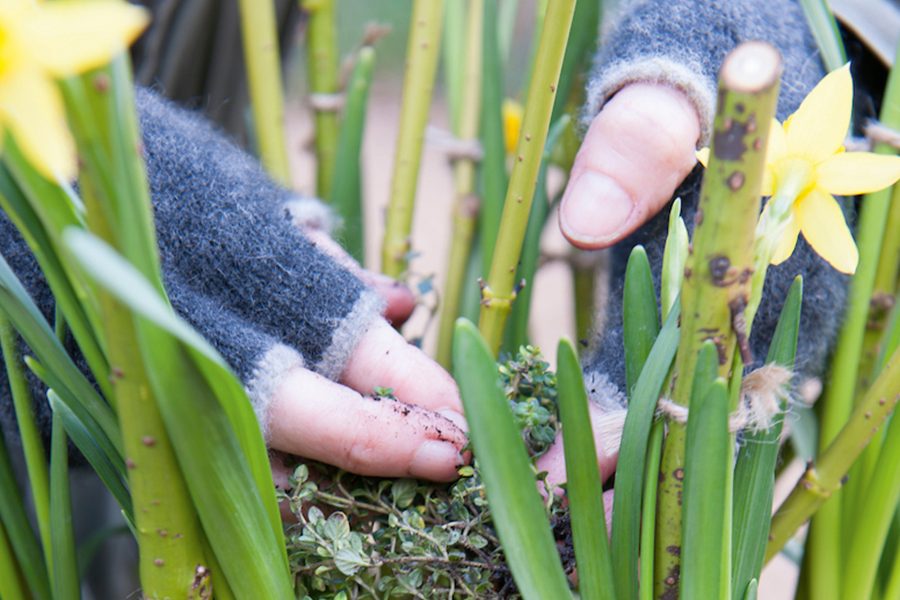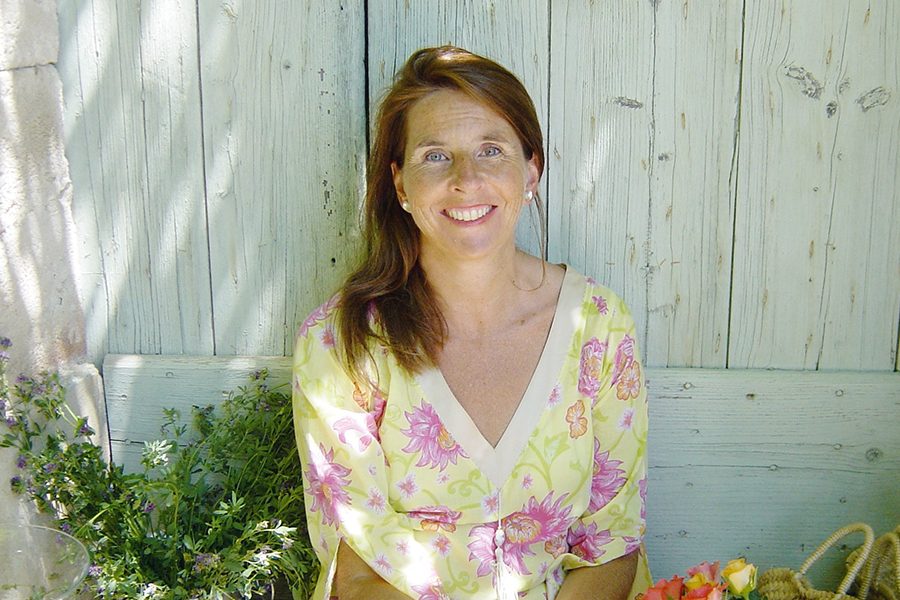
What inspired you to write a book focusing on city gardens?
I wanted to demonstrate that it’s possible to grow flowers in the tiniest city spaces. While it’s obvious that the more space you have, the more plants you can grow, a lack of space shouldn’t put you off. I’ve created lots of projects in my book to show how you can grow flowers and herbs against walls and up drainpipes as well as in pots, containers and hanging planters. Nobody should be without flowers!
How do flowers transform a city space?
Flowers, plants and trees have a hugely transformative effect on both public and private city spaces. Not only do they improve the environment visually, they improve it by keeping the air clean and absorbing pollution, particularly carbon. They mask the constant noise and create pockets of privacy and shelter. They keep us cool in hot weather and insulate buildings when it’s cold, whilst the soil they are growing in provides drainage and acts as a flood deterrent. They increase bio-diversity – brightly coloured flowers attract bees and other vital pollinators – and in turn they encourage the birds to nest in city trees. All this helps us to retain contact with nature on a human level and contributes to our sense of wellbeing.

How does an urban environment affect planting?
Urban buildings create their own shelter pockets so the growing season is extended, giving tender and half-hardy plants a much greater chance of survival. City gardens have their own microclimate. I have roses in my garden that bloom virtually year round; and the Mexican daisies (Erigeron karvinskianus), which have self-seeded profusely in every nook and cranny, are always in flower. Equally, if you are restricted to growing plants in pots, container gardening provides the flexibility to move everything around according to the seasons.
What should we be planting now?
In early spring the first bulbs herald the start of the new gardening year. Daffodils (Narcissi) will burst into flower as the days get longer and the air warms up. If you didn’t get the chance to plant your bulbs in autumn you can buy them in leaf, ready to go straight in the ground. You’ll also see grape hyacinths (Muscari), primroses, violets, forget-me-nots and snake’s head fritillaries (Fritillaria) that will all live happily in pots and containers. Consider some bare root wallflowers to plant later in the month; and once the ground is warm enough to sit on, try direct sowinga packet of annual seeds such as cornflowers or poppies for quick and easy germination.
How can you create the illusion of space in a small city garden?
Blurring the boundaries helps. If you can’t see the end, the space will feel bigger. Using evergreen climbers on walls and fences will obscure them. A structure such as a small pergola at the bottom of a garden can give the impression that it extends further, as does a false door set into a wall. Strategically placed mirrors will reflect the space back at you. Another tip is to repeat what’s going on next door. I have a fig tree on my side of the fence in exactly the same spot where my neighbour has one on the other side. When they’re both in leaf they look like one huge tree and hide the fence completely.

Urban Flowers by Carolyn Dunster, Published 6 April by Frances Lincoln, £20, hardback (quartoknows.com)